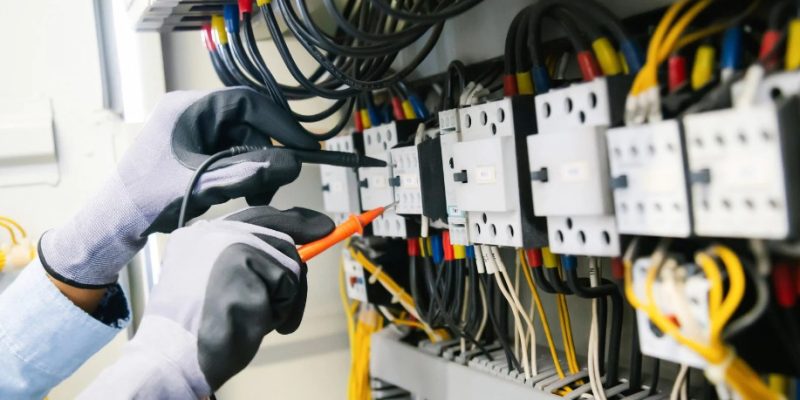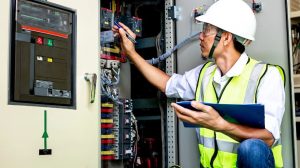
The Role of Electrical Integrity Management in Modern Industries
Electrical integrity management has become essential for your business if you rely on complex electrical systems. Your company faces increasing pressure to maintain operational continuity while reducing costs.
Effective electrical integrity systems help you detect problems early, prevent costly failures, and extend equipment life.
As industrial systems grow more complex, the need for systematic monitoring and maintenance of your electrical components becomes more critical for safety, reliability, and economic reasons.
Fundamentals of Electrical System Reliability

The reliability of your electrical systems directly affects your production capabilities and safety standards.
When your electrical systems fail, the consequences extend beyond repair costs to include production losses, safety risks, and potential regulatory issues.
Regular assessments help you identify weaknesses before they cause shutdowns. Most electrical failures develop gradually. Your systems typically show signs of deterioration before complete breakdown.
These warning signs include voltage fluctuations, increased power consumption, unusual heating, and intermittent faults.
Detecting these early indicators allows your maintenance teams to address issues during scheduled downtime rather than during emergencies.
The cost difference between planned maintenance and emergency repairs is substantial. Emergency repairs often cost three to five times more than scheduled maintenance.
Additionally, unexpected downtime causes production losses that typically exceed repair costs. Electrical Integrity Solutions provides the monitoring capabilities needed to transform reactive maintenance into predictive approaches that significantly reduce these costs.
Modern electrical integrity systems use sensors, data analysis, and specialized testing equipment to monitor critical parameters continuously.
This technology shifts maintenance from time-based schedules to condition-based interventions, reducing unnecessary maintenance while preventing failures.
Impact on Operational Costs and Efficiency
Electrical system failures rank among the top causes of unplanned downtime in your operations.
Studies show that unexpected electrical failures can reduce your annual production capacity by up to 5%. The financial impact includes direct repair costs, lost production, and potential contract penalties.
Effective electrical integrity management creates measurable improvements in several key performance areas for your business.
You can expect increased equipment lifespan, with properly maintained systems lasting longer than those subject to reactive maintenance.
This extension translates directly to reduced capital expenditure and improved return on investment for your electrical infrastructure.
Labour efficiency also improves with structured electrical integrity programs. Maintenance teams spend less time responding to emergencies and more time on scheduled, productive tasks.
This shift allows companies to maintain operations with smaller maintenance teams, addressing skilled labour shortages affecting many industrial sectors.
Advanced Monitoring Technologies and Approaches
Modern electrical integrity systems employ sophisticated technologies to detect potential issues.
Infrared thermography identifies hotspots in electrical systems that indicate resistance problems before they cause failures. This non-contact method allows inspection without disrupting operations.
Partial discharge monitoring detects electrical insulation deterioration in medium and high-voltage equipment.
These early warnings of insulation breakdown help prevent catastrophic failures in critical systems. The technology works continuously without interrupting normal operations.
The electrical signature analysis examines current and voltage patterns to identify mechanical and electrical issues in motors and connected equipment.
The method detects misalignment, bearing wear, and electrical faults without disassembly or downtime. Time-domain reflectometry locates insulation faults and other issues in cables without physical inspection.
This technology proves especially valuable for buried or otherwise inaccessible cabling, reducing diagnostic time from days to hours.
The integration of these technologies with central monitoring systems creates comprehensive oversight of electrical infrastructure.
Modern systems generate actionable alerts rather than raw data, helping maintenance teams prioritize their response.
Industry-Specific Applications and Challenges
The rail sector faces unique electrical integrity challenges with distributed power systems spanning large geographic areas.
Signal power failures cause significant service disruptions and safety concerns. Weather exposure and ageing infrastructure compound these challenges.
Modern monitoring systems now provide remote visibility into these distributed networks, allowing operators to address issues before they affect service.
Oil and gas operations contend with harsh environmental conditions that accelerate electrical component deterioration.
Offshore applications face salt exposure, while land-based operations encounter temperature extremes and dust. Both environments demand specialized monitoring solutions designed for these specific conditions.
Manufacturing facilities deal with high-power equipment that creates electrical stress and harmonics.
These factors accelerate insulation degradation and component failure. Production demands often limit maintenance windows, making early detection and scheduled intervention essential.
Implementation Strategies for Maximum Value

Successful electrical integrity programs begin with a comprehensive system assessment. This baseline evaluation identifies critical components, current conditions, and potential failure modes.
The assessment prioritizes monitoring and maintenance resources based on operational impact and safety considerations.
Staff training forms an essential component of effective implementation for your team. Your maintenance personnel need skills to interpret monitoring data and perform appropriate interventions.
Your operations staff benefit from a basic understanding of how to recognize warning signs during normal activities.
Phased implementation proves more successful than attempting complete system transformation.
You should typically start with critical systems that present the highest operational risk, then expand as you develop expertise and demonstrate value.
This approach allows better resource management and builds organizational support.
Integration with existing maintenance management systems maximizes value. Electrical integrity data should feed into the same platforms that schedule and track other maintenance activities.
Regular program review completes the implementation cycle. Checking actual results against expected benefits identifies improvement opportunities and justifies continued investment in electrical integrity management.





